Who holds the power to host, and who is condemned to remain a perpetual guest, deprived of the right to move, to stay, or to return? Can artistic and educational platforms become spaces where we create both physical and metaphorical refuges?
VARDUHI BALYAN
.jpg)
The video installation Guesthouse transforms static images taken inside a detention center for people denied entry into a country. The work confronts the paradoxical language of hospitality—the term “guesthouse”— when applied to spaces designed for exclusion, control, and waiting. The work examines borders not only as geographic lines, but as lived conditions, in which the roles of host and guest are dictated by hierarchy, authority, and the absence of choice. Who holds the power to host, and who is left in the perpetual position of a guest, stripped of rights? Through fragmented images that shift and move, the project reveals the instability of belonging: the void of suspended time, the disorientation of loss, and the fragile negotiations of identity in a world where state borders grow thicker by the minute. Rather than offering a fixed narrative, Guesthouse asks viewers to inhabit the in-between, where hospitality doubles as surveillance, and where the promise of shelter is bound with the reality of exclusion.
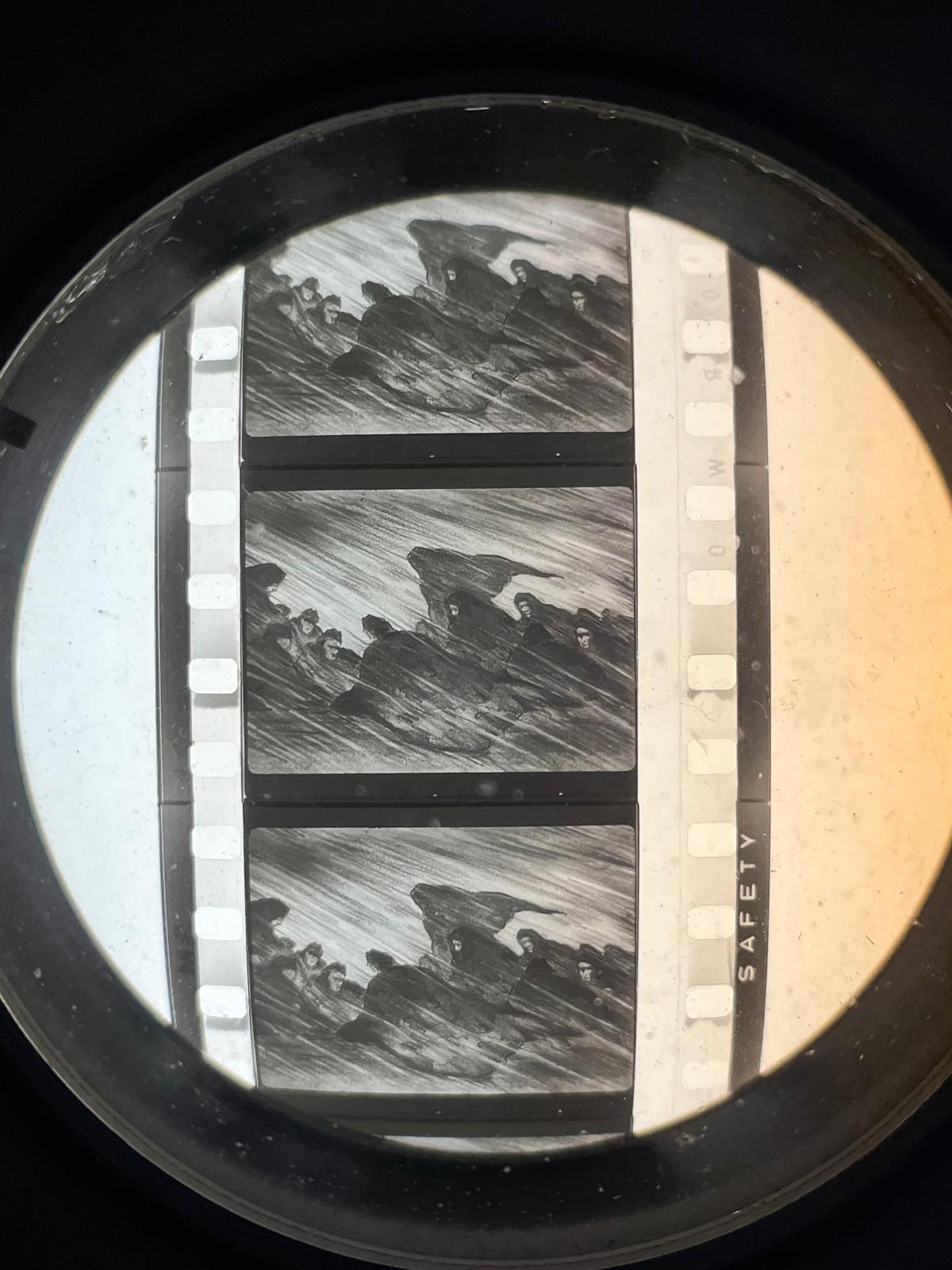
KARLA CRNČEVIĆ & BEHSHAD TAJAMMOL
Invisible Gaze examines two distinct archives of Iran and Yugoslavia, tracing the subtle echoes and shared language that bind them. Composed of textual fragments and details drawn from historical documents, the piece revisits the act of witnessing, questioning how the past is seen, recorded, and reimagined through time.
LARISA CRUNȚEANU
.jpg)
I took these pictures while on a research trip with a group of people I have not met before. My head was already filled with other people, and other places and faces who have animated the months and years before. Every hour, the room felt more and more crammed, new stories and characters adding to existing ones, while the walls closed in. Taking pictures was a way of hiding behind a camera, another way of naming a room. Camera obscura, the little room where reality turns upside down. From this little room, I have discovered two things: that the walls are stretchy and can accommodate way more than I thought; and that I can also move around—not to remain on an eternal outside, but to capture more angles of the inside. Echoing this social dance, the work asks the viewer to move around, and discover the words lying beyond the immediately visible.
NEVENA DELIĆ
The work is a photograph, a photograph of a site, a photograph of a site of an oversight. It is a site where the performative rigor of the border regime seems to crumble, leaving a slip-up, unintentionally poetic, unintentionally revealing a soft spot behind the Schengen border complex. At the same time, the site reveals how bodies are framed, how they move, how that movement is prescribed and obstructed, by and through the border. A few meters down the road is the four meter high and 175km long fence topped with razor wire, installed in 2015. In the following years, the fence was upgraded, made pointier, more painful and more daunting. Yet despite all of that rigor, this particular site conveyed a sense of porosity, and hope in permeability and failure. Entering Serbia, between Hercegszántó and Bački Breg, I was stuck in a long car queue in no man’s land. It was a site to behold. I wanted to offer this landscape for reflection, like the background you would put in a fishtank, a landscape as an illusion of freedom and of the possibility of passage.
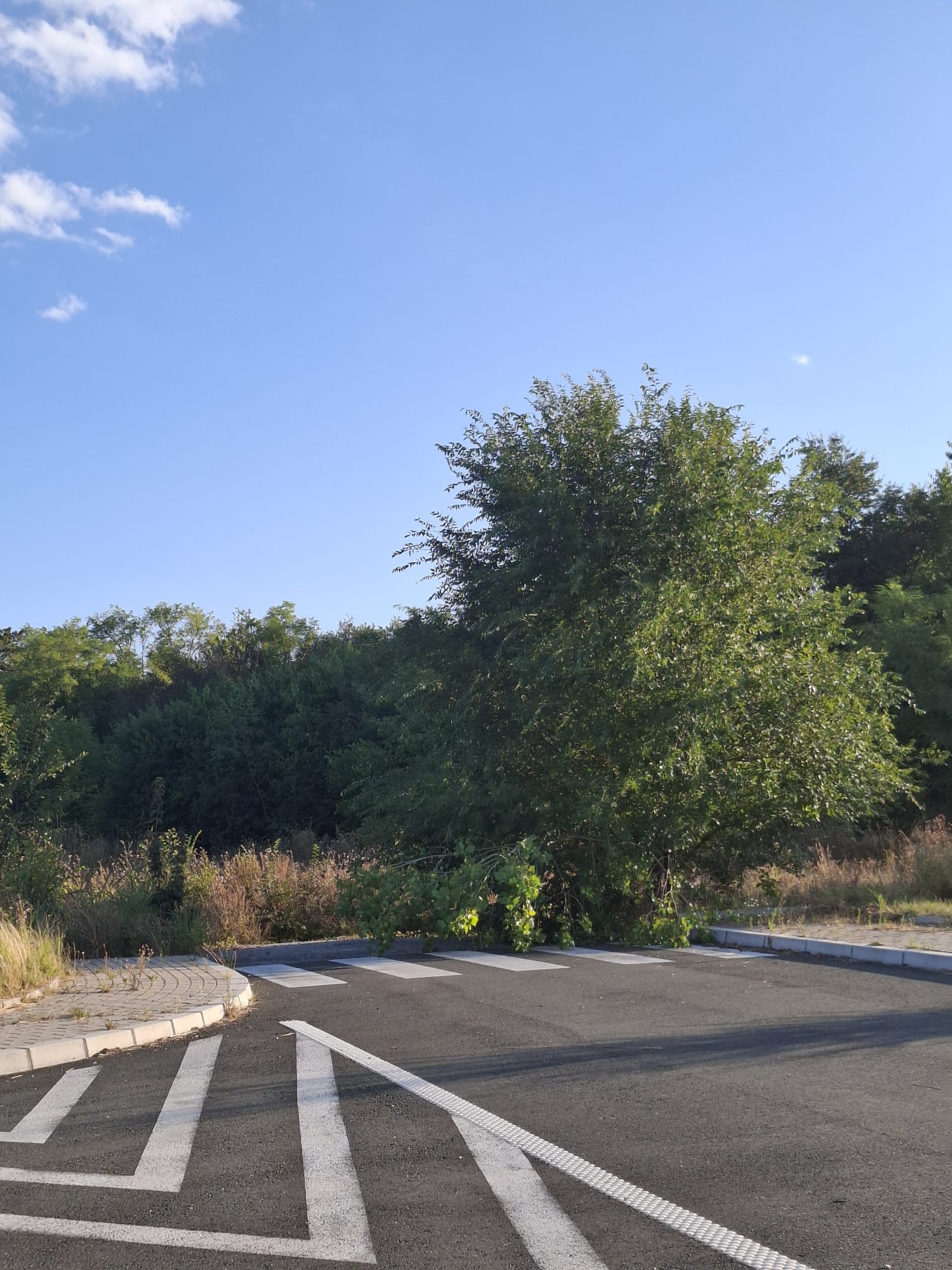
KATARINA GOTIC DAMIANI
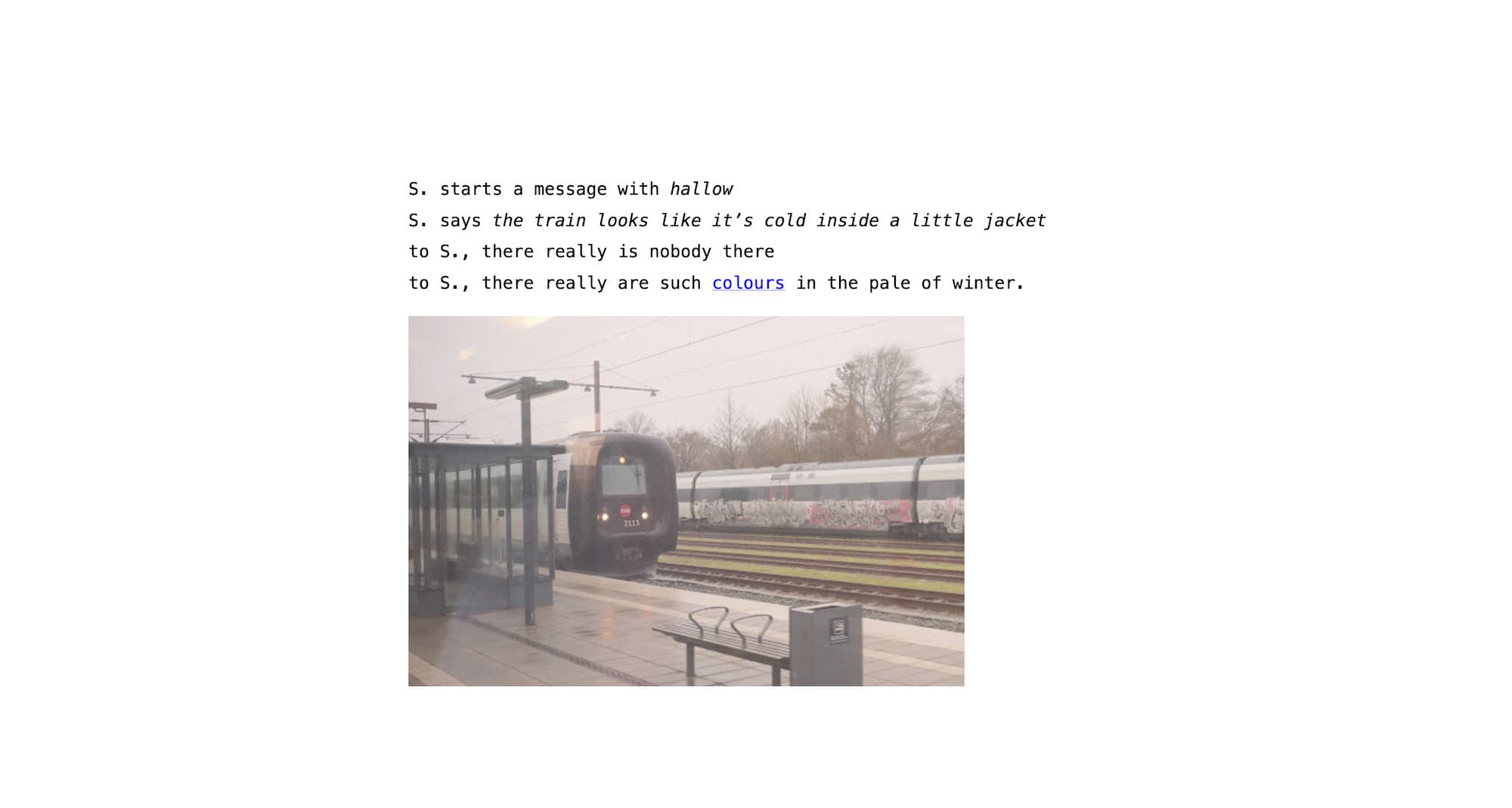
.jpg)
ANIMA GOYAL
ill at ease, is a part-diary, part-workbook, that builds from an ongoing research on chronic illness from the lens of (mis)translation and poetry. It reinterprets the structure of pain management workbooks from the perspective of an ill translator, whose language and body are becoming foreign to herself. Pain is unstable and resists being reprocessed in clinical conditions. It trembles and migrates. A long-term pain can find temporary relief by producing a smaller pain elsewhere in the body. She was prescribed Capsaicin and does not like using it. She prefers to scratch herself constantly when her fingernails are long. It keeps the older pains away for a little longer. She accumulates new pains, and is in fatigue. When recovery is not possible, the ill body produces more illnesses.
.jpg)
KATARZYNA ŁUKASIK
In 1947, the Soviet-backed Polish communist regime led a forced resettlement action called Operation “Vistula,” which was carried under the official slogan “To Resolve the Ukrainian Question Once and For All.” During the operation, approximately 150,000 people were forcefully displaced from the southeastern provinces of postwar Poland. District Gorlice, total number of people displaced 11894* maps sites of one of the seventeen districts which were ethnically cleansed. Through re-tracing uprooted populations, the drawing calls into question the archival mechanics of categorization, classification, and tagging, examining the visual and textual language of databases as both nodes of registry and a practice of world-making.
ALISA OLEVA
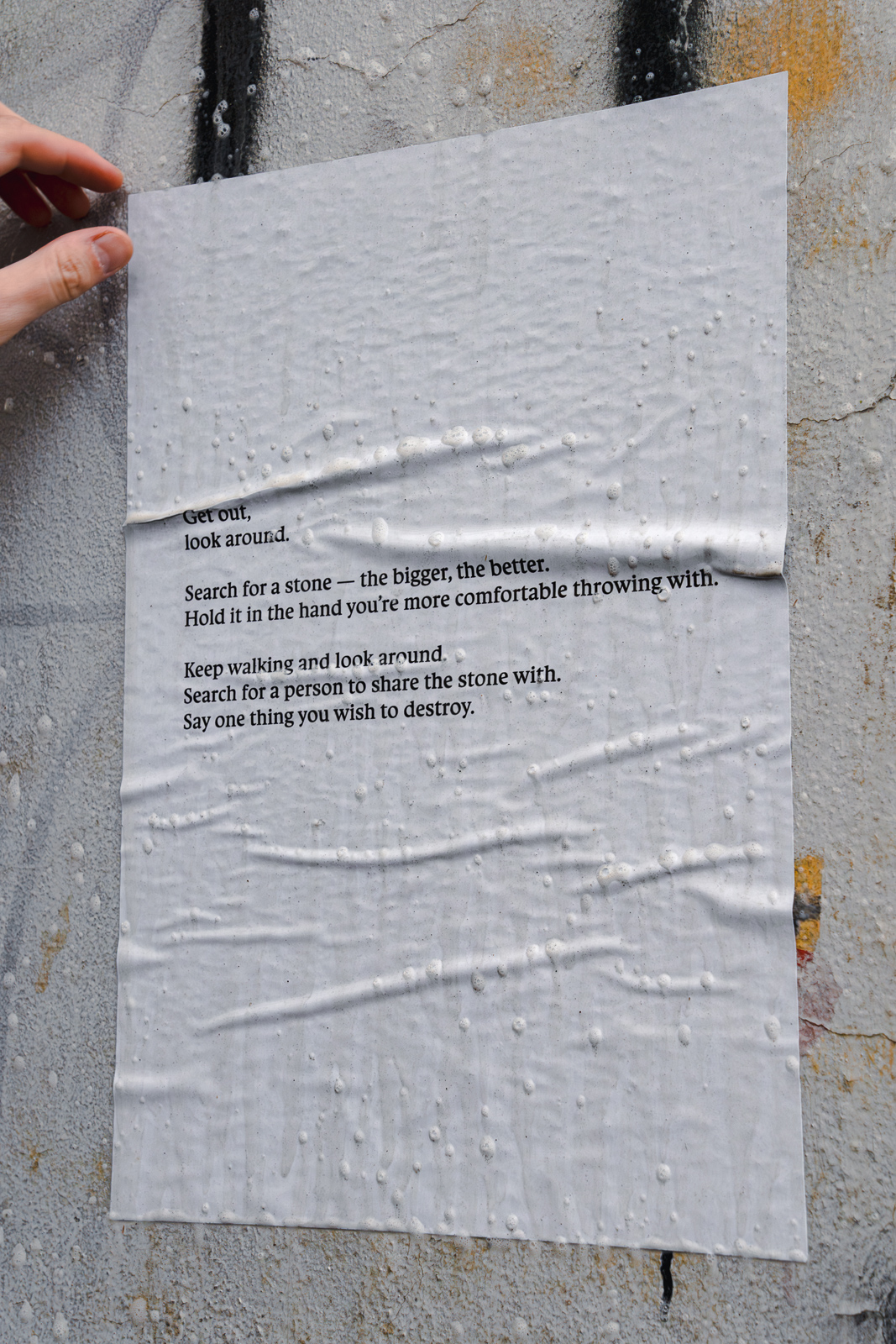
Do you remember is a series of 12 walking scores to be displayed on posters in public spaces of Zagreb. These scores are poetic and political invitations to pause, notice, and follow the given instructions. All of the walking scores respond to the themes we touched upon during WHW Akademija 2025: borders, migrations, displacement, land, edges, in-betweens, language. In the times of ongoing wars and genocides, these walking scores, seen fleetingly in the public space of your own city, remind one of the potential of poetry to speak and call for action. If you notice a walking score as you rush to work, to meet a friend, or to buy something from a shop, pause to read it, take a photo and maybe do it one day, even if in your imagination. The walking scores are written by myself and my peers from this year’s WHW Akademija generation. They are written in languages chosen by each contributor without translation into English, to highlight the multiplicity of languages and identities crossing paths in the streets of the city.
Contributors:
Varduhi Balyan
Nevena Delić
Katarina Gotic Damiani
Anima Goyal
Alisa Oleva
Behshad Tajammol
Petar Vranjković

NEVENA SAVIĆ
When embarking on a research on stećci—medieval graves found mostly in Bosnia and its surroundings—I noted a peculiar pattern in the style of their inscriptions. While most texts begin with a description of the deceased, some of the texts then switch to the first person, allowing the deceased to directly address visitors to their grave. Just like in Brechtian theatre, the audience is confronted, touched, and asked for (self-)awareness in an intimate moment. One of the stones reads: “And I beg you, do not step onto me, for I was as you are and you will be as I am.” The careful dramaturgy of the gravestone highlights the plea for respect. Looking for a language to approach them, I turned to Mak Dizdar’s poem “A Note on a Spring.” It helped me to verbalize how difficult it can be to hold several worlds at the same time, to relate both to your sea and to your spring; how our movements complicate static notions of belonging and how the ancestors really don’t have to be ghosts to talk to us.
EZRA ŠIMEK
.jpg)
outlaw lullaby brings together footage from two journeys: a winter road trip through the American South and Midwest, across the landscapes of the Bible Belt and “Trump’s America,” and a collective trip to Bihać, a border city marked by migration and displacement. Fragments of travel merge with voice-over, pop-cultural echoes, and musical references, weaving everyday encounters with archetypes of belonging and nostalgia. The work juxtaposes two geographies in which “freedom” is fiercely claimed, yet unevenly lived. Through layered images and sounds, outlaw lullaby opens a space between perception and speculation, moving within the distance between the fragility of narrativized politics and the textures of everyday life.
PETAR VRANJKOVIĆ
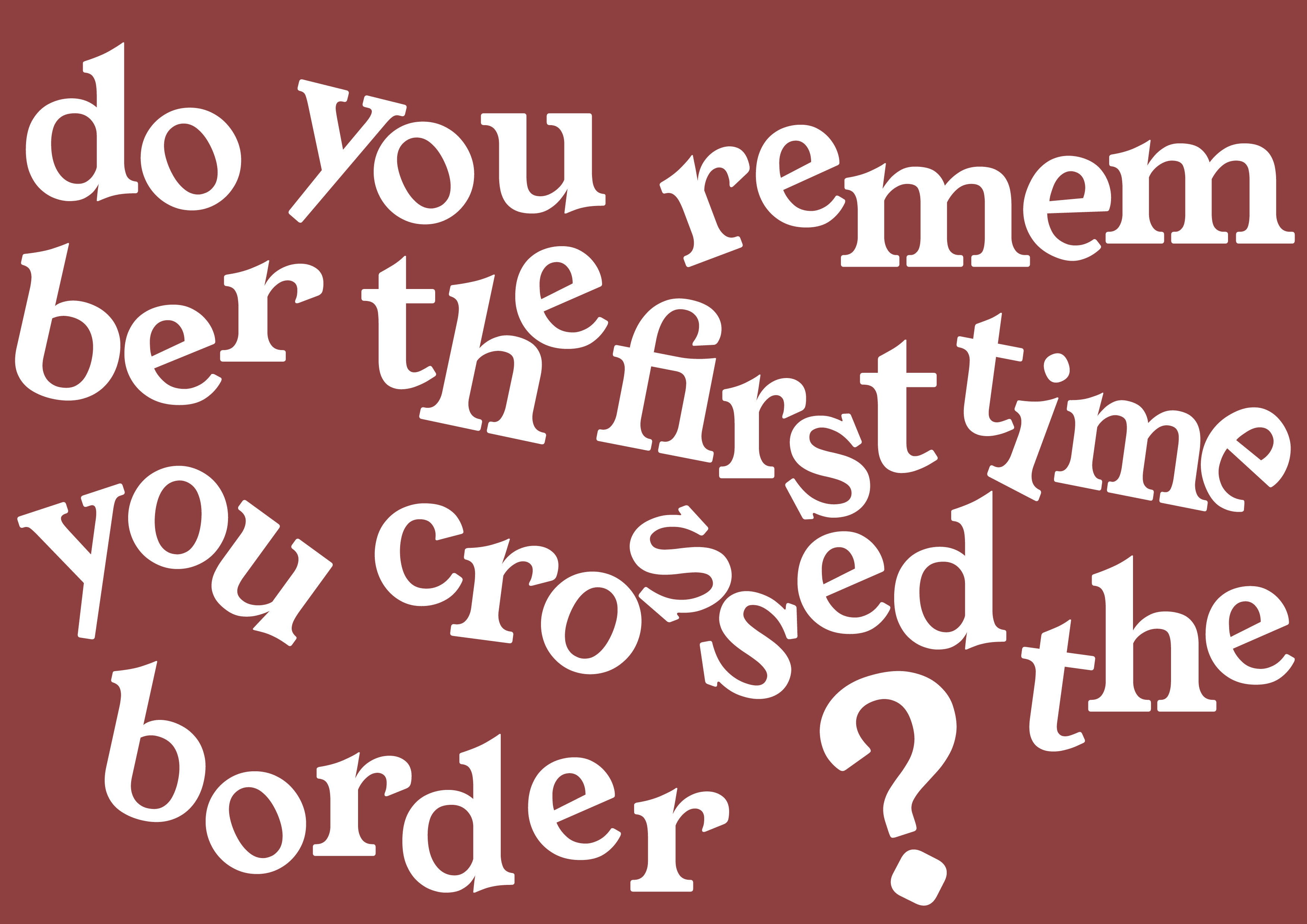
can you ask yourself “do you remember the first time you crossed the border?” was it a physical one, or was it some other kind?
can you ask yourself how did you feel–how it made you feel? was it comfortable or not? do you even know what a border is and why was it crossed?
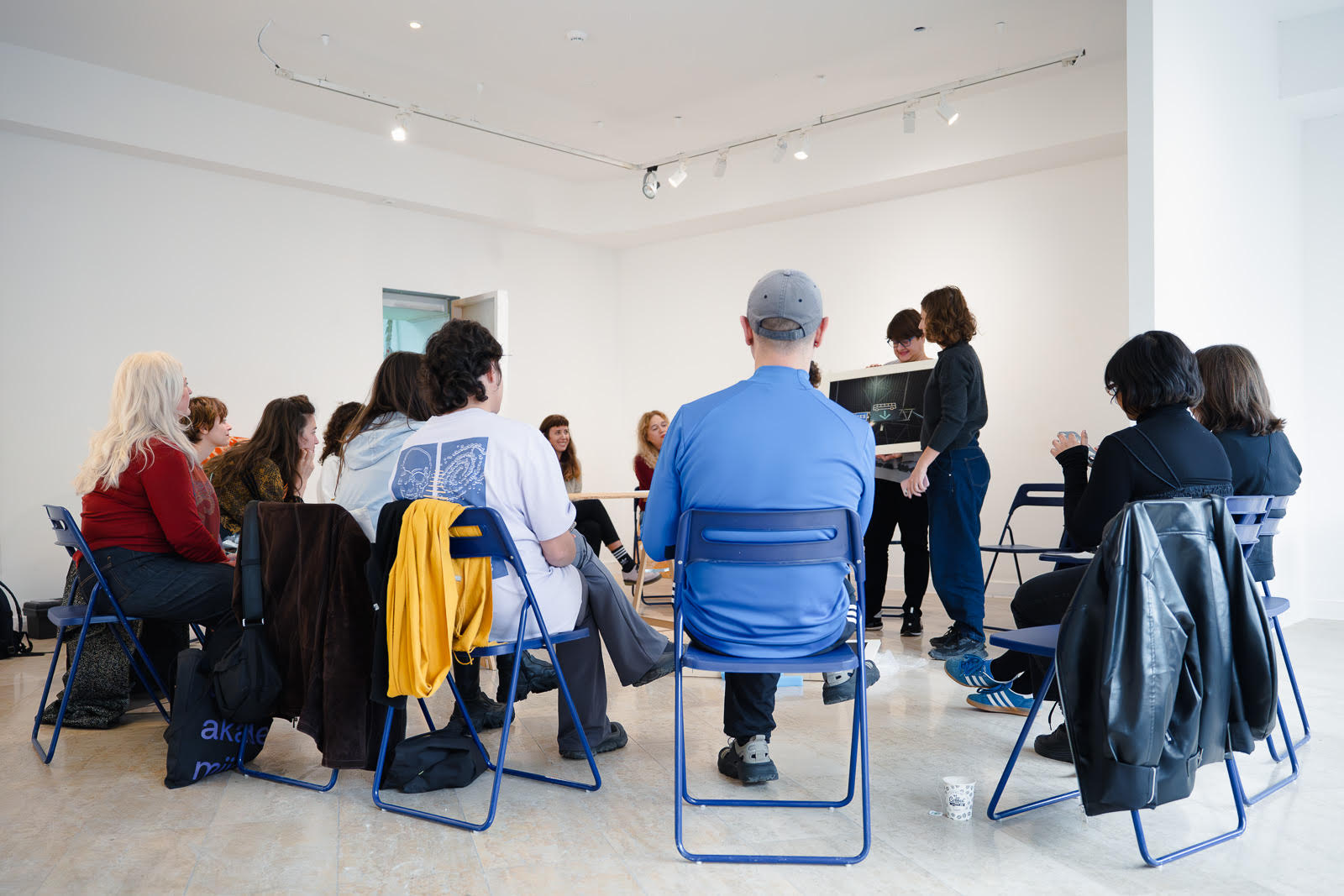


.jpg)